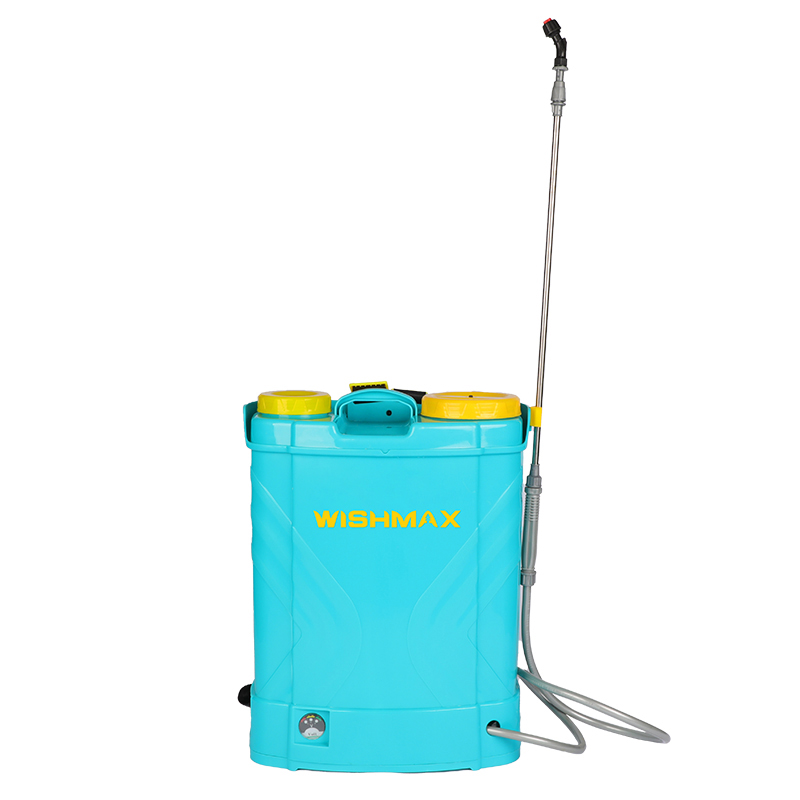Note: If the pesticide is mixed in this way, it will have no effect at all!
date:2023-02-20

The reasonable mixing of pesticides can improve the control effect, delay the resistance of diseases and pests, improve the control effect, and reduce the dosage of pesticides. The mixing of pesticides to control different diseases and pests can also reduce the application times, thus reducing labor costs.
If the mixture is not reasonable, it may be dangerous, ranging from no effect at all to drug damage.
Pesticide mixing order
① The mixing sequence of pesticides should be accurate. The mixing sequence of foliar fertilizer and pesticides is usually as follows: micro-fertilizer, water-soluble fertilizer, wettable powder, water dispersible granule, suspending agent, microemulsion, water emulsion, water and emulsifiable oil should be added in turn (in principle, the mixing of pesticides should not exceed three kinds). Each kind of pesticide should be fully mixed, and then the next one should be added.
② Add water first and then add medicine. When conducting secondary dilution and mixing, it is recommended to add more than half of the bucket of water into the spray first, and then add a pesticide and mix evenly. Then, dilute the remaining pesticide with a plastic bottle, pour it into a spray after dilution, mix it well, and so on (if you want to have a good effect, don't be lazy).
③ No matter what kind of medicine is mixed, attention should be paid to "use it as it is prepared and not put it for a long time". Although the liquid medicine has no reaction at the time of initial preparation, it does not mean that it can be placed at will for a long time, otherwise it is easy to produce slow reaction and gradually reduce the efficacy.
Principle of mixed use of pesticides
1. Mixed use of pesticides with different poisoning mechanisms: The mixed use of pesticides with different mechanisms can improve the control effect and delay the emergence of drug resistance of diseases and pests.
2. Pesticides with different toxic effects: The mixed pesticides have contact killing, stomach poisoning, fumigation, internal inhalation and other ways of action. If these pesticides with different control effects are mixed, they can complement each other, which will produce good control effects.
3. Mixed use of insecticides acting on different insect forms: The mixed use of insecticides acting on different insect forms can kill all kinds of insect pests in the field, killing them thoroughly, thus improving the control effect.
4. Mixed use of pesticides with different time effects: some kinds of pesticides have good control effects, but their duration is short; Some of them have poor prevention effect, but the effect time is long. Such mixed use of pesticides not only has good post-application control effect, but also can play a long-term control role.
5. Mixed use with synergist: synergist has no direct toxic effect on diseases and pests, but it can improve the control effect when mixed with pesticides.
6. Mixed use of pesticides acting on different diseases and insect pests: when several diseases and insect pests occur at the same time, this method can reduce the times of spraying, reduce the working time, and improve the efficiency.
Precautions for mixed use of pesticides
Although mixed use of pesticides has many advantages, it is not allowed to mix them randomly. Unreasonable mixing is not only useless, but also has the opposite effect. The following points should be paid attention to when mixing pesticides.
1. Do not change physical properties
That is, after mixing, there shall be no oil slick, flocculation, sedimentation or discoloration, nor shall there be heating, bubble generation and other phenomena. If both are powders, or granules, fumigants, and aerosols, they can generally be mixed;
Different dosage forms, such as wettable powder, emulsifiable oil, concentrated emulsion, gel suspension, water solvent and other liquid agents with water as the medium, should not be mixed at will.
2. No chemical change
① Many pesticides can not be mixed with alkaline or acidic pesticides. Under alkaline conditions such as Bordeaux liquid and sulfur mixture, carbamate, pyrethroid insecticides, thixocarbamate, and Daisencycline are prone to hydrolysis or complex chemical changes, thus damaging the original structure.
② Under acidic conditions, 2,4-D sodium salt, 2 methyl 4 sodium chloride salt, and bisformamidine will also decompose, thus reducing the efficacy.
③ In addition to acid-base properties, many pesticide varieties cannot be mixed with drugs containing metal ions.
④ The mixed use of dithiocarbamate 2,4-D herbicide and copper agent can produce copper salt to reduce the efficacy.
⑤ Thiophanate-methyl and Thiophanate-methyl can lose their activity by complexing with copper ions.
⑥ In addition to copper agents, other preparations containing heavy metal ions such as iron, zinc, manganese, nickel and other preparations should be used with special caution.
⑦ The mixture of stone sulfur agent and Bordeaux liquid can produce harmful copper sulfide and increase the content of soluble copper ions.
⑧ Dispaspalum, butachlor, etc. cannot be mixed with organophosphorus and carbamate insecticides. Some chemical changes may cause drug damage.
3. Pesticides with cross resistance should not be mixed
For example, carbendazim and tolbutazine methyl have cross-resistance. Mixed use can not only delay the development of drug resistance of bacteria, but also accelerate the development of drug resistance, so it cannot be mixed.
Last:Precautions for reagent mixing
Next:Inspection list of dosing machine before operation season


